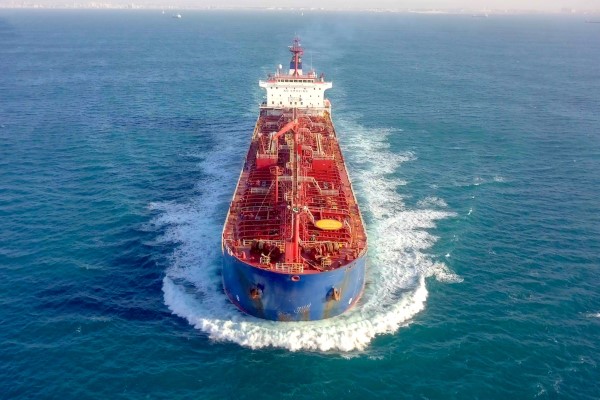Analysis: Surging U.S. Crude Oil Exports Disrupt European, Asian Prices
(Reuters) — Surging U.S. crude exports in 2023 are pushing down oil prices in Europe and Asia, proving a key source of supply as producers cut output and sanctions on Russian crude disrupt trade flows.
The introduction in June of U.S. crude grade WTI Midland to set the price of the dated Brent benchmark assessed by S&P Global Commodity Insights has not only spurred the rising exports but also helped to cap Brent and the European, African, Brazilian and Asian oil that are priced off the benchmark, traders and analysts said. U.S. crude exports are also easing the loss of supply after Saudi Arabia deepened output cuts from July, above what major producers agreed to in June.
The widening exports illustrate the increasing influence of crude from the U.S., the world's biggest oil producer, in the global market. It further cements the role of U.S. supplies in balancing the market, especially as outlets for sanctioned Russian crude are limited.
U.S. crude exports have averaged 4.08 million barrels per day so far in 2023, up from an average of 3.53 million bpd in 2022, according to the Energy Information Administration.
Out of the 61 dated Brent assessments to July 27 that have included WTI Midland, the U.S. grade has been among the most competitive in all but one, while it's been the single most competitive alone on half of those days, said Joel Hanley, global director, crude and fuel oil markets at S&P Global. This means WTI Midland is effectively setting the price for the benchmark.
Other physical crude grades are feeling the pressure as a result of the U.S. supplies. The price difference for Forties crude cargoes loading in the North Sea to dated Brent averaged a discount of 2.9 cents a barrel in July, down from a premium of 12.4 cents in June and 24.5 cents in May, according to data on Refinitiv Eikon.
"As Midland becomes more and more important in the dated Brent assessment, it has a knock on effect on other grades having to price themselves lower to compete with WTI Midland," said Rohit Rathod, market analyst at energy researcher Vortexa.
Pressure Extends
The pressure exerted from the WTI Midland exports is even extending to Asian markets for Middle Eastern crude.
Murban crude from the United Arab Emirates is close in density to WTI Midland, but with more sulphur, and is used by traders to compare the economics of shipping WTI to the east.
The premium of Murban futures to Dubai quotes averaged $1.90 a barrel, steady from the previous month, while that for cash Dubai gained 43 cents to $1.57 a barrel during the month, according to Reuters calculations using market trade data.
A near-record volume of WTI Midland is set to be shipped east in August.
"There is more and more WTI production flooding the global markets," said Adi Imsirovic, director at Surrey Clean Energy, who formerly headed global oil trading at Gazprom Marketing and Trading.
Unlike crude from producers in the Organization of the Petroleum Exporting Countries (OPEC), who are currently reducing output to support prices, "WTI is freely traded, without destination and output restrictions, and WTI value has become a key to the global pricing," he said.
The increased WTI flow to Europe has weakened Brent futures relative to Dubai, though Dubai has also strengthened after Saudi Arabia announced in June additional output cuts beyond what OPEC and its allies agreed to, which has reduced the amount of high-sulphur Middle Eastern crude, particularly medium and heavy grades, available to Asian refiners.
Brent's premium to Dubai, or the Exchange of Futures for Swaps (EFS), averaged 78 cents a barrel in July, the narrowest in more than two years. DUB-EFS-1M
The effect has been to make low-sulphur Atlantic Basin crude such as those from Europe, Africa and Brazil more affordable for Asian buyers and boosted demand for WTI Midland in the region, with a Singapore-based oil trader saying the grade kept Murban prices in check in July.
Even as crude demand to Asia should be falling as some refiners carry out maintenance ahead of the Northern Hemisphere winter there is great interest in bringing WTI to Asia, said John Evans of brokerage PVM Oil. He notes that the grade's discount to Dubai, expensive Saudi Arabian crude and low freight rates are making WTI attractive.
The flow of WTI into Asia in August is high but not quite at the previous record, and that is "impressive enough to keep the bulls interested," he said.
Related News
Related News

- Keystone Oil Pipeline Resumes Operations After Temporary Shutdown
- Freeport LNG Plant Runs Near Zero Consumption for Fifth Day
- Biden Administration Buys Oil for Emergency Reserve Above Target Price
- Mexico Seizes Air Liquide's Hydrogen Plant at Pemex Refinery
- Enbridge to Invest $500 Million in Pipeline Assets, Including Expansion of 850-Mile Gray Oak Pipeline





Comments